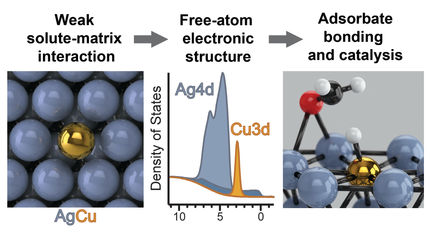Facile synthesis of nanoparticles with multiple functions advanced in Singapore
Metals that dissolve in water successfully extracted, transferred into layer of organic solvent that floats on water
Advertisement
Nanostructured materials have garnered great interest worldwide due to their unique size-dependent properties for chemical, electronic, structural, medical and consumer applications.
Singapore's Institute for Bioengineering and Nanotechnology (IBN) has discovered a new environmentally friendly method to synthesize a wide variety of nanoparticles inexpensively. This new chemical synthesis has been recently published in Nature Materials.
IBN researchers have developed a protocol to transfer metal ions from an aqueous solution to an organic solution such as toluene. Metal compounds that can dissolve in water are inexpensive and commonly available.
Many useful metals and scarce materials that are soluble in water may now become readily employed in the synthesis of nanoparticles. This new approach developed by IBN is a simple, room-temperature process that does not produce toxic chemicals.
The IBN research team has successfully transferred metal ions rapidly from water to an organic medium by mixing a solution of metal salts dissolved in water with an ethanol solution of dodecylamine (DDA). The metals would bond with the DDA and can then be extracted with an organic solvent, chemical compounds that usually have a low boiling point, evaporate easily or can be removed by distillation. Solvents can be used to extract soluble chemical complexes from a mixture.
At IBN, the transfer of the metal ions from the aqueous phase to the organic phase was successfully applied towards the synthesis of a variety of metallic, alloy and semiconductor nanoparticles.
In contrast to other approaches for nanoparticles synthesis, the IBN protocol allows metal-based nanoparticles to be prepared in an organic medium using water-soluble, inexpensive, common metal precursors.
This method is highly efficient and easily applied to derive many types of nanoparticles that have interesting applications, including metal-semiconductor nanocomposites and hybrid nanoparticles.
Besides IBN's focus on applying this protocol to the nanocrystalline synthesis of metals, semiconductors and their hybrids, the extraction of metals dissolved in water would be significant for applications in environmental remediation, e.g. extraction of heavy metals from water and soil.
"Water pollution from heavy metals is a major long-term economic and healthcare problem that has global implications. Once contaminated, it is often difficult and expensive to purify the affected environment and extract the pollutants. Besides highly toxic metals such as mercury and lead, other valuable metals, including gold, silver, iridium and osmium, are also soluble in water, and may be extracted by our protocol," remarked IBN Research Scientist Jun Yang, Ph.D.
"At this point, it is possible to extract the metals very effectively using an organic solvent such as toluene to remove the metal residue. Organic solvents are less dense than ethanol or water and float on top of the aqueous solution. When we agitate the mixture, the metals dissolve in the toluene and are completely removed from the ethanol and water. Our process allows us to extract metals from water without leaching out the mineral ions that are normally present in water or soil," said Dr. Yang.
"We have demonstrated a general protocol for transferring metal ions from water to an organic phase. This technique may be applied to transfer a wide range of transition metal ions from water. We can greatly facilitate and reduce the cost of producing a variety of metallic, alloy, semiconductor and semiconductor-metal hybrid nanoparticles through our simple and flexible approach to engineer advanced materials with novel structures and multiple functionalities" said Jackie Y. Ying, Ph.D., IBN Executive Director and principal investigator of this research.
Other news from the department science
Most read news
More news from our other portals
See the theme worlds for related content
Topic world Synthesis
Chemical synthesis is at the heart of modern chemistry and enables the targeted production of molecules with specific properties. By combining starting materials in defined reaction conditions, chemists can create a wide range of compounds, from simple molecules to complex active ingredients.

Topic world Synthesis
Chemical synthesis is at the heart of modern chemistry and enables the targeted production of molecules with specific properties. By combining starting materials in defined reaction conditions, chemists can create a wide range of compounds, from simple molecules to complex active ingredients.
























































